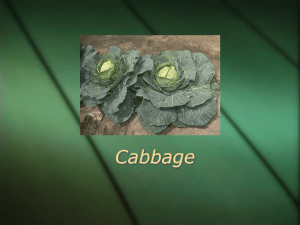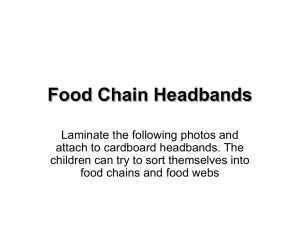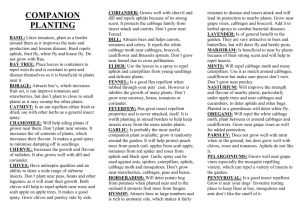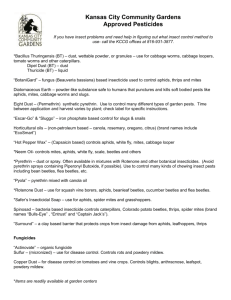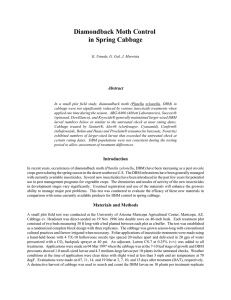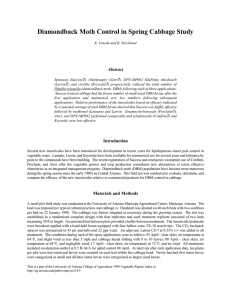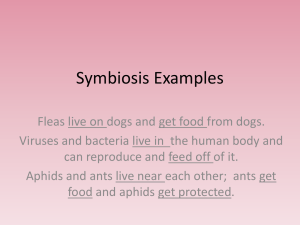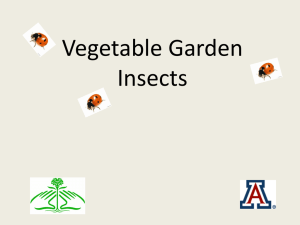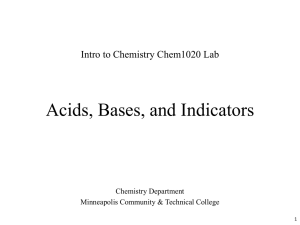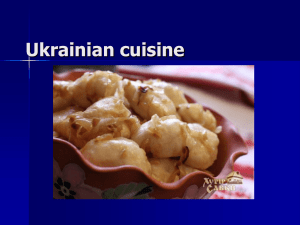AND APHIDS (Bravicoryne brassicae)
advertisement
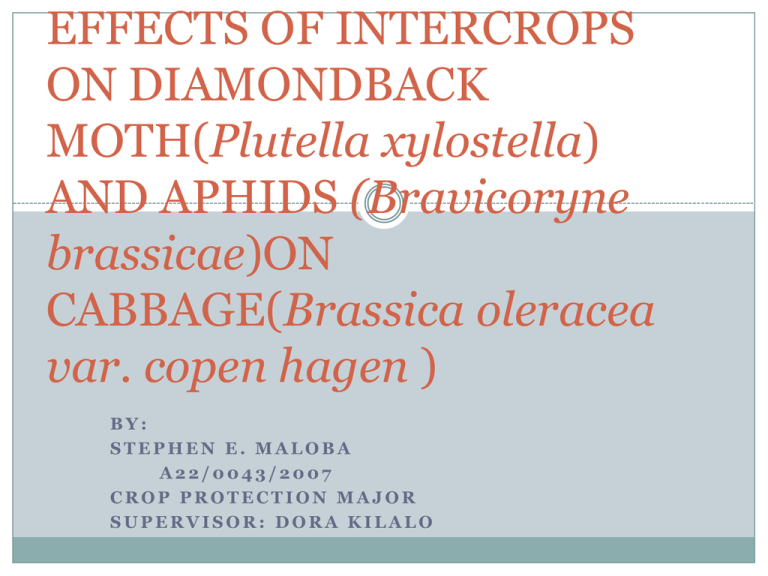
EFFECTS OF INTERCROPS ON DIAMONDBACK MOTH(Plutella xylostella) AND APHIDS (Bravicoryne brassicae)ON CABBAGE(Brassica oleracea var. copen hagen ) BY: STEPHEN E. MALOBA A22/0043/2007 CROP PROTECTION MAJOR SUPERVISOR: DORA KILALO INTRODUCTION Cabbage is of great economic importance. Useful food for all classes of livestock and when suitable varieties are grown, high value crops can be produced for human consumption. Cabbage prefers moist, heavy soils and seasons with plenty of rainfall. (Lockhart, 1983) CABBAGE PRODUCTION IN KENYA The major cabbage growing provinces in Kenya include Central and Rift Valley with 40% and 39% 0f the total national production respectively. Average production from 2002- 2006 was 416,373.0 tons. A little quantity is exported. Cont… Major constraints of production in Kenya are -pests and diseases –Diamond back moth(P. xylostella) -Species of aphids – Brevicoryne brasscae, Lipaphis erysymi and myzus pericae. -Diseases-Black rot and soft rot Problem statement Diamond back moth is an important pest of cruciferous crops. In its control, farmers tend to use insecticides repeatedly which result in the development of resistance to many common insecticides. Destruction of diamond back moth coupled with its capacity to develop resistance rapidly has posed a great challenge to farmers. JUSTIFICATION Diamondback moth is known to have potential capacity to develop resistance to pesticides in a short period of time. The pesticides are able to affect negatively even beneficial insects and also produce contamination occurs. Objectives General objective - To investigate the effects of intercrops in the management of Diamondback moth and aphids in cabbage. Specific objectives -To determine effective management of DBM and aphids on cabbage by intercrops. Hypothesis -Intercropping is not effective in the management of DBM and aphids. MATERIALS AND METHOD The study was carried out at Kabete field station in a complete randomized block design. T1 T2 T3 T3 T4 Ctrl Ctrl T1 T3 T2 T3 T1 T4 T2 Ctrl T1 T4 T2 Ctrl T4 Cont….. Plots measuring 2x2metres(four replicates) were used. Repellant plants used: spider plant, coriander and onion Chemical used: Dimethoid Cabbage, the main crop was used as the control. PARAMETERS COLLECTED Number of eggs on cabbage Number of larvae on cabbage Number of pupae on cabbage Damage scores in cabbage RESULTS Effects of intercrops on DBM Treatment Eggs Larva Pupa Damage scores Spider plant 3 (82%) 1.13(80%) 0.45(89%) 0.63 (84%) Corriander 7.75 (46%) 3.00(46%) 1.62(59%) 2.25 (43%) Onions 5.33 (63%) 2.04(63%) 1.12 (71%) 1.38 (65%) Chemical 10.08 (30%) 3.92(29%) 2.5 (10%) 2.96 (25%) Control 14.33 (0) 5.5(0) 3.91 (0) 3.96 (0) LSD 1.21 0.76 0.49 0.30 CV % 26.4% 47.3% 44.1% 23.2% Effects of treatments on aphids population Aphid population 35 30.62 30 25 19.6 20 15 17 13.75 14.75 10 5 0 Spider plant Corriander Onions Chemical Contol DISCUSSION I deduced that spider plants worked the best as a result of its strong repellant smell against the DBM. Chemical control results were as observed probably as a result of DBM’s resistance to the Dimethoid used or ability to develop resistance rapidly. Aphids’ populations were not greatly affected by the repellant effect of the intercropped plants hence, their higher population. CONCLUSION AND RECCOMENDATION Intercrops have an effect on DBM and aphids. Cleome gnandra is able to reduce the DBM and aphids on cabbage more than Coriander dhania and onions. Farmers to be advised to intercrop their cabbage with spider plant. Farmers to limit the use of chemicals in the management of DBM and aphids in order to preserve environment, limit produce contamination and cut down on the cost of production. THANK YOU
